 Your new post is loading...
 Your new post is loading...

|
Scooped by
Gust MEES
|

|
Scooped by
Gust MEES
|

|
Scooped by
Gust MEES
|
Artificial Intelligence (AI) refers to a machine’s ability to mimic human behavior and, to an extent, human intelligence.
There are two types of AI that you need to know about: narrow AI and general AI.
Narrow AI performs single tasks – chess playing, weather forecasting, Google translation, repetitive industry tasks and autonomous driving.
General AI, on the other hand, is defined by multitasking and, most consequential of all, learning. It combines the simulation of human intellect and cognitive ability with the capacity to recognize sounds and objects, problem-solve and understand language. Learn more / En savoir plus / Mehr erfahren: https://www.scoop.it/t/21st-century-learning-and-teaching/?&tag=AI https://www.scoop.it/t/21st-century-innovative-technologies-and-developments/?&tag=AI

|
Scooped by
Gust MEES
|
Sie suchen Hilfe beim Selbstbau, Zugang zu 3D-Drucker, Lasercutter oder anderen Maschinen? In Fablabs, Makerspaces und offenen Werkstätten wird Ihnen geholfen. Die Makerspacekarte zeigt Ihnen, wo Sie in Ihrer Nähe Unterstützung finden.
Auch wer gerne allein im stillen Kämmerlein werkelt, darf sich Maker nennen. Oft macht es aber gemeinsam mehr Spaß. Im deutschsprachigen Raum gibt es aktuell über 200 Orte, an denen sich die Maker-Community trifft. Diese haben wir in einer Online-Karte zusammengefasst, damit Sie einfach mal nachschauen können, wo in Ihrer Region oder Stadt Gleichgesinnte zusammenkommen.
Von der Grundausstattung mit Werkzeug bis zur Open-Source-Software: alles Wichtige zum Einstieg ins Elektronik-Basteln vermittelt das Make-Sonderheft "Richtig loslegen".
In der Karte finden Sie Makerspaces, Hackerspaces, FabLabs, offene Werkstätten und andere vergleichbare Orte für Maker. Jeder dieser Treffpunkte ist anders ausgestattet und organisiert und setzt unterschiedliche Schwerpunkte. Vom Einraum-Hackspace mit Couch und 3D-Drucker bis zum geförderten Riesen-FabLab mit Dutzenden Profi-Maschinen ist alles dabei. Learn more / En savoir plus / Mehr erfahren: https://www.scoop.it/t/21st-century-learning-and-teaching/?&tag=makerspace https://gustmees.wordpress.com/?s=makerspaces+luxembourg

|
Scooped by
Gust MEES
|

|
Scooped by
Gust MEES
|
Depuis un certain temps, le terme "Big Data" est sur toutes les lèvres. Qu'est-ce qui se cache derrière ce terme ? Dans ce dossier, BEE SECURE expliquera ce que sont ces "grosses données", comment ces montagnes de données sont utilisées et quel est leur impact sur notre quotidien.
"Big Data" signifie littéralement "grosses données". Il s'agit de quantités de données qui sont trop grandes, trop complexes, trop éphémères et ne pas assez structurées pour l'exploitation à l'aide d'un traitement manuel des données (p.ex. lecture d'une valeur d'un tableau Excel). Le "big" dans Big Data se rapporte à trois dimensions :
Volume (volume de données) : De combien de données s'agit-il ?
Velocity (vitesse) : Avec quelle vitesse les données sont-elles générées, déplacées et à nouveau modifiées ?
Variety (variété) : Quelles sont les différentes sources des données ? Quels différents types de donnée existent-ils ?
Le terme francophone serait "mégadonnées", mais celui-ci n'est que très rarement utilisé dans les médias, raison pour laquelle nous utiliserons également le terme anglais Big Data.
Le terme désigne non seulement les quantités de données en soi, mais également les technologies nécessaires pour les collecter et traiter : par exemple, pour les visualiser ou les préparer d'une autre façon pour qu'elles soient compréhensibles pour les êtres humains.
L'avancée technologique a permis de stocker des quantités de données toujours plus importantes. Dans les années 90, des disquettes d'une capacité de stockage de seulement 1,4 MB et des disques durs avec quelques centaines de MB étaient la norme, tandis qu'aujourd'hui des clés USB avec plusieurs gigabits sont distribuées comme gadgets publicitaires et des disques durs avec plusieurs téraoctets sont intégrés dans des ordinateurs standards. Pour faire court : ce n'est plus un problème aujourd'hui de stocker une grande quantité de données - grâce à des "clouds storage", il ne vous faut même plus de disques durs physiques chez vous, il est possible de louer des espaces en ligne partout dans le monde. En même temps, la capacité du processeur a également augmenté, de sorte qu'il est possible de traiter des quantités de données toujours plus importantes.
D'où viennent les données du Big Data ?
De manière générale, les données considérées comme "Big Data" peuvent venir de tous les domaines de vie imaginables pour lesquels des données sont nécessaires. De manière générale, nous ne devons pas oublier en tant qu'utilisateurs que toutes les données qui peuvent être collectées seront en effet collectées. La liste suivante n'est donc en aucun cas exhaustive, mais elle offre un aperçu des sources de données du Big Data : Learn more / En savoir plus / Mehr erfahren: https://www.scoop.it/t/21st-century-learning-and-teaching/?&tag=Algorithm https://www.scoop.it/t/21st-century-learning-and-teaching/?&tag=Big+Data...

|
Scooped by
Gust MEES
|
Technologie et confiance
L’intelligence artificielle au service de la manipulation des images rend facilement accessible la création de vraies-fausses vidéos. On se dit que tout n’est pas permis sur Internet, mais que décidemment beaucoup de choses sont deviennent techniquement faisables. Dr. Matthieu Farcot de SECURITYMADEIN.lu et BEE Secure ( Luxembourg ) explique cette tendance récente.
«Avez-vous entendu parler des “DeepFakes”? Ce sont des vidéos manipulées par une solution logicielle simple à utiliser mais aux résultats impressionnants. En utilisant une plate-forme logicielle libre de droits, et un ordinateur récent munis d’une carte graphique puissante, n’importe qui peut insérer n’importe quel visage dans n’importe quelle vidéo. A la vue des résultats, il est indéniable qu’un pallier technique a été franchi.
Et ces résultats, nombreux, ne se sont pas fait attendre. Internet a vu ces dernières semaines une explosion de telles vidéos produites, portant en particulier sur une thématique bien précise: la réalisation de films pornographiques manipulés où la tête de l’actrice originale est remplacée par celle d’une célébrité.
La technologie est connue, mais illustre parfaitement le bond en avant réalisé dans le domaine de l’intelligence artificielle ces dernières années et surtout de sa démocratisation. Jusqu’à maintenant, au moins pour les solutions grand public, le remplacement de visage était envisageable uniquement sous la forme d’une extraction souvent grossière d’une partie de source vidéo pour en recouvrir une autre.
L’effet pouvait marcher pour peu que les images soient des visages regardant dans la même direction, mais il était plutôt simple de voir la manipulation (notamment au niveau de l’éclairage et des raccords). Les solutions plus poussées (incluant une modélisation 3D des visages et/ou du “facepainting” plus réaliste) restaient l’apanage des professionnels.
Cette année 2018 marque un changement notable, non pas par rapport aux technologies utilisées (les réseaux de neurones en matière d’intelligence artificielle sont un sujet ancien), mais par rapport à leur accessibilité et leur simplicité d’usage. L’augmentation exponentielle de la puissance de calcul des outils informatiques disponibles au grand public permet d’envisager la réalisation de calculs qui n’étaient pas possible il y a peu.
L’objet n’est pas ici de nous attarder sur le contenu pour adulte mais de nous interroger sur les conséquences de telles technologies. Car la maturité du traitement est réelle, et 5 minutes de film d’un individu permet d’exporter en moyenne plus de 10.000 images correspondant à l’échantillon nécessaire pour permettre au moteur d’intelligence artificielle de réaliser un échange procédural entre deux visages générés par un réseau de neurones. Learn more / En savoir plus / Mehr erfahren: https://www.scoop.it/t/luxembourg-europe/?&tag=Cybersecurity https://www.scoop.it/t/luxembourg-europe/?&tag=AI

|
Scooped by
Gust MEES
|
Super Starter Kit UNO R3 Project From Elegoo. In one of my previous blog posts I used Arduino-UNO Starter Kit, which I ordered at Conrad (English version) and I wasn't really impressed by the manual, it didn't satisfy to my expectations and needs. SO, I was looking around to find some distributors for a BETTER version...… Learn more / En savoir plus / Mehr erfahren: https://gustmees.wordpress.com/?s=arduino

|
Scooped by
Gust MEES
|
Recently I bought myself the latest model of 3D-printers from Formlabs, the Form2.
The Form 2 delivers high-resolution prints in Industrial 3D printing quality and it is very, very expensive. (I had been waiting (and saving money) for 3 years until I made the financial plunge to get such a machine)
But it has the huge advantage that dosen’t require a lot of tweaking and experimenting to run, you just take it out of the box, you install it and it runs !! It comes with the right software, the materials you need to use are in sich a packaging (1 Liter resin cartridges !) that you can concentrate on the objet you’re printing and not on the maintenance of the machine. The system recognises the resin type, configures settings, and allows you to keep track of resin supplies.
The Form 2 is a SLA printer where SLA stand for Stereolithography. SLA is an additive manufacturing – commonly referred to as 3D printing – technology that converts liquid materials into solid parts, layer by layer, by selectively curing them using a light source in a process called photopolymerization. SLA is widely used to create models, prototypes, patterns, and production parts for a range of industries from engineering and product design to manufacturing, dentistry, jewelry, model making, and education. Learn more / En savoir plus / Mehr erfahren: https://www.scoop.it/t/21st-century-learning-and-teaching/?&tag=3D-Printing

|
Scooped by
Gust MEES
|

|
Scooped by
Gust MEES
|
Der Begriff „stalken“ wird umgangssprachlich oft scherzhaft verwendet – das Phänomen ist jedoch alles andere als lustig.
„Ich habe ein wenig dein Facebook-Profil gestalked“ ist ein Satz, den man öfters hört. Gemeint ist damit meistens, dass der Gegenüber sich das eigene Profil genau angesehen hat und dabei vielleicht auch Fotoalben angesehen hat, die etwas älter sind. Mit tatsächlichem, kriminellen Stalking hat das jedoch nicht viel zu tun. Unter Stalking verstehen wir ein „obsessives und unnormal langes Muster von Bedrohung und Belästigung“ oder „obsessives Verfolgen und Belästigen eines Menschen, so dass dessen Sicherheit bedroht und er in seiner Lebensgestaltung schwerwiegend beeinträchtigt wird“. Cyberstalking nennen wir es, wenn sich diese Verhaltensmuster vor allem online abspielen. Learn more / En savoir plus / Mehr erfahren: https://www.bee-secure.lu

|
Scooped by
Gust MEES
|
Agnostizismus (latinisierte Form des griechischen ἀγνωστικισμός, a-gnōstikismós von altgriechisch ἀγνῶσις, a-gnō̂sis ohne Wissen, ohne Erkenntnis) ist die philosophische Ansicht, dass Annahmen - insbesondere theologische, welche die Existenz oder Nichtexistenz einer höheren Instanz, beispielsweise eines Gottes, betreffen - ungeklärt bzw. nicht klärbar sind. Vertreter des Agnostizismus werden als Agnostiker bezeichnet.

|
Scooped by
Gust MEES
|
Im Netz gibt es sie wie Sand am Meer: Gefälschte und manipulierte Bilder, die mit Bildbearbeitungsprogrammen verändert wurden. Meist sollen sie nur für Lacher sorgen – manchmal fallen auch berühmte Persönlichkeiten auf diese „Shoops“ (benannt nach der beliebten Software „Photoshop“) herein, zur allgemeinen Belustigung. Überhaupt nicht lustig sind solche Fälle, in denen Fotomontage verwendet wird, um mit politischen Absichten einen falschen Eindruck zu wecken. So teilte die deutsche Politikerin Erika Steinbach ein Bild, das die „Refugees Welcome“-Bewegung verunglimpfte. Nach den Events in Charlottesville in den USA teilte ein Journalist ein Bild, das einen der rechtsnationalen Protestler gemeinsam mit US-Präsident Trump zeigt – ebenfalls eine Fälschung. In beiden Fällen wurden die Bilder tausendfach geteilt; definitiv keine kleine Sache, findet Georges Knell von BEE Secure.
„Durch solche ,Fakes‘ lässt sich besonders leicht ein falsches Bild über bestimmte Personen oder bestimmte Gruppen von Personen verbreiten, besonders, wenn diese in einem negativen Kontext dargestellt werden. Oft ist es auch so, dass solche ,Fakes‘ öfter verbreitet werden, wenn sie in das Weltbild der bestimmten Person passen oder ihre Meinung über eine bestimmte Person respektiv über eine bestimmte Gruppe von Personen bestätigen. In solchen Fällen wird besonders schnell und ohne weiteres Nachfragen geteilt; das ist aber keineswegs nur ein Kavaliersdelikt, denn in den meisten Fällen verteilt sich der Inhalt damit wie ein Lauffeuer, während sich für eine eventuelle Richtigstellung meistens niemand mehr interessiert – so entsteht allzu schnell eine emotional aufgeladene Diskussion, die sich in einem Sturm der Entrüstung entlädt.
Durch Liken und Teilen in sozialen Netzwerken entsteht dabei eine Art Schneeballeffekt: Immer mehr Menschen bekommen Wind von der Kritik und hinterlassen ebenfalls Kommentare. Rationale Argumente haben dann oft keinen Platz in der Diskussion mehr. Learn more / En savoir plus / Mehr erfahren: https://www.bee-secure.lu/ http://www.scoop.it/t/21st-century-learning-and-teaching/?&tag=No+Hate+Speech
|

|
Scooped by
Gust MEES
|

|
Scooped by
Gust MEES
|
Avec les nouveaux modèles d’enseignement, tous les équilibres, tous les codes sont remis en cause. Au sens strict du terme, il n’y a plus d’enseignant, pas de cours, pas de programme, rien que des cas concrets à résoudre en trouvant soi-même la solution ou en s’associant à d’autres élèves. Cette pédagogie met l’accent sur le comportement, les capacités à travailler à plusieurs et à apprendre très vite en autonomie.
Pour Romain Martin, vice-recteur pour les affaires académiques de l’Université du Luxembourg, «la principale erreur consiste à se focaliser sur les technologies elles-mêmes. Il ne faut pas simplement regarder l’outil, mais comment ces outils sont utilisés.» Une désacralisation des technologies pourtant au cœur des enjeux, au profit d’une démarche pédagogique nouvelle. La tendance est ainsi à l’«adaptive learning». [Gust MEES] pratiquant ceci déjà depuis 2002 et enfin reconnu... Learn more / En savoir plus / Mehr erfahren: https://www.scoop.it/t/21st-century-learning-and-teaching/?&tag=Modern+Learning https://gustmees.wordpress.com/?s=learning+2+learn

|
Scooped by
Gust MEES
|
We were already playing around with a 2.8 inch TFT Display and SDCard recently in a previous tutorial <===> First Steps with the Arduino-UNO R3 | Maker, MakerED, Coding | 2.8″ TFT Touch Screen with SDCard <===> and we will create a badge. Learn more / En savoir plus / Mehr erfahren: https://www.scoop.it/t/21st-century-learning-and-teaching/?&tag=ARDUINO

|
Scooped by
Gust MEES
|
image2cpp is a simple tool to change images into byte arrays to use with (monochrome) displays suchs as OLEDs, like those from Adafruit or Sparkfun. While searching for a way to generate these arrays, I mostly found links to a piece of Windows software. Both the flakey results and the hassle of having to boot a virtual machine just to convert an image lead to me writing this pure html + javascript solution. Alternatively you can also enter a byte array as input to turn it back into an image. This might be useful for debugging, or when you want to write the byte array yourself. I don't know. Running the toolYou don't need any special dependencies / internet connection; all the necessary parts sit in a single .html file. So just open this index.html page in a (recent) browser to run the tool. Or you can use the online version at: http://javl.github.io/image2cpp/ Learn more / En savoir plus / Mehr erfahren: https://www.scoop.it/t/21st-century-learning-and-teaching/?&tag=ARDUINO BTW: Above shown image is my "MAUSI", which was the "Mascot" for my Cyber-Security courses in Luxembourg EDUcation in 2003-2007. Those courses were mandatory for students up from 12 years old (7èmes). Learn more about Cyber-Security in Luxembourg (Europe): https://gustmees.wordpress.com/2017/11/22/luxembourg-and-cyber-security-how-did-it-start/

|
Scooped by
Gust MEES
|
In den USA wurde vor kurzem die Netzneutralität abgeschafft. Das zuständige Gremium, die FCC, hat seine Regeln diesbezüglich zurückgenommen. Unter Präsident Obama war die Netzneutralität nämlich eigentlich verankert worden – sein Nachfolger bzw. dessen FCC-Chef hat dies Ende letzten Jahres rückgängig gemacht.
Doch was heißt das eigentlich? Im "Urzustand" des Internets, so wie es seit seinem Beginn funktionierte, werden alle Datenpakete gleich behandelt. Das heißt, dass eine private E-Mail genauso schnell oder langsam durch die Unterseekabel reist wie beispielsweise ein Video einer Streaming-Plattform oder ein Telefonat mit einem Messenger. Seitens der Netzbetreiber gibt es seit langem Bestrebungen, diesen Zustand zu beenden. Sie könnten dann sowohl die Betreiber von Webseiten und Diensten zur Kasse bitten – als auch ihre Nutzer. Wer ruckelfrei Netflix oder Youtube schauen will, müsste dann ein spezielles „Streaming-Paket“ bezahlen. Gleichzeitig könnte ein Internet-Provider aber auch einen Deal mit einem Streaming-Dienst eingehen und dessen Mitbewerber künstlich verlangsamen. Learn more / En savoir plus / Mehr erfahren: https://www.scoop.it/t/securite-pc-et-internet/?&tag=net+neutrality https://www.scoop.it/t/securite-pc-et-internet/?&tag=Netzneutralit%C3%A4t

|
Scooped by
Gust MEES
|
De gros titres, tels que "Algorithmes - les vrais maîtres du monde ?" ou "Les algorithmes influencent-ils notre quotidien ?", sont à la une des journaux, notamment dans le contexte du Big Data. Dans ce dossier, nous expliquerons ce que sont les algorithmes, comment ils fonctionnent et à quoi ils servent. Nous aborderons également les aspects éthiques.
Un algorithme est une instruction ou une règle logique et explicite sur la manière dont un problème est à résoudre, et se compose de différentes étapes exécutées l'une après l'autre ou simultanément. Pour la majorité des algorithmes, une entrée donnée conduit toujours à la même sortie. Dans la plupart des cas, les algorithmes s'appliquent sous forme de logiciels informatiques, mais ils peuvent également être formulés en langage humain. L'exemple le plus illustre d'un algorithme de notre quotidien est une recette de cuisine.
D'où vient le nom ?
Le terme algorithme est dérivé du nom du mathématicien et géographe korasmien Muhammad Ibn Musa al-Khuwarizmi, originaire de la région de l'Iran d'aujourd'hui, qui a passé la majeure partie de sa vie à Bagdad. En 825, il écrit un manuel sur les chiffres indiens et y explique également le fonctionnement des algorithmes. Le livre sur les chiffres, que nous connaissons aujourd'hui sous le nom de "chiffres arabes", a été traduit en latin au 12e siècle. La dernière partie de son nom (al-Khuwarizmi) a été traduite par "Algorismi". Les premiers mots étaient "Dixit Algorismi" (Algorismi a dit), d'où s'est finalement dérivé le terme algorithme.
Learn more / En savoir plus / Mehr erfahren: https://www.scoop.it/t/21st-century-learning-and-teaching/?&tag=Algorithm https://www.scoop.it/t/21st-century-learning-and-teaching/?&tag=Big+Data...

|
Scooped by
Gust MEES
|
Anlässlich des SID 2018 informiert BEE SECURE Sie über die Öffnung dieses neuen 5-wöchigen MOOCs, der sich an alle Lehrer/innen des Landes wendet!
Angeboten wird der MOOC von der European Schoolnet Academy. Er vermittelt einen vollständigen Überblick über die neusten Internet-Trends und die Probleme, denen Jugendliche im Netz begegnen können. Von den Fake news (Falschmeldungen) über Sextortion bis hin zum Cybermobbbing und Hate Speech, Lehrer aus der Grundschule und der Sekundarschule erhalten hier eine Fülle von nützlichen Informationen.
Wenn Sie an dem Thema interessiert sind, können Sie sich jetzt schon hier online anmelden: OnlineSafetyMOOC.
Auch wenn Erziehung allgemein und das Erlernen eines verantwortungsvollen Verhaltens im Internet zu Hause anfangen, sollten auch Lehrer/innen in der Lage sein, ihren Schülern alle erforderlichen Hilfsmittel an die Hand zu geben, damit sie in der Online-Welt mit ihren möglichen Auswüchsen zurechtkommen. Aus diesem Grund bietet die European Schoolnet Academy einen 5-wöchigen Online-Kurs an, in dem die aktuellsten Themen aufgegriffen werden. Learn more / En savoir plus / Mehr erfahren: https://www.bee-secure.lu https://www.bee-secure.lu/de/events/safer-internet-day/safer-internet-day-2018

|
Scooped by
Gust MEES
|
Manche sind genervt von ihnen, andere können gar nicht genug bekommen – Tests auf Facebook, die das eigene Profil analysieren und dabei Daten sammeln. Wie soll ich mit solchen Tests umgehen? BEE SECURE rät:Unzureichende Datenschutzerklärungen, intransparente Informationen und zweifelhafte Geschäftsmodelle bestimmen die „Szene“ dieser Tests. Da diese Tests so gut wie keinen Mehrwert haben, sondern vermutlich sowieso nach dem Zufallsprinzip arbeiten, empfiehlt BEE SECURE, sie zu meiden. Die Risiken, dass die eigenen Daten verkauft oder gar in Fake-Profilen verwendet werden, sind größer als der Nutzen, den diese „lustigen“ Tests bieten. Learn more / En savoir plus / Mehr erfahren: https://www.scoop.it/t/21st-century-learning-and-teaching/?&tag=Big+Data...

|
Scooped by
Gust MEES
|
WHAT Is a Thread On Social Media Twitter and How To Use It For Story Telling WHAT Is a Thread On Social Media Twitter and How To Use It For Story Telling? That's a question one sees very often NOW on Twitter as it is NEW. Let me explain by a practical authentic… Learn more / En savoir plus / Mehr erfahren: https://gustmees.wordpress.com/?s=twitter

|
Scooped by
Gust MEES
|

|
Scooped by
Gust MEES
|
Anfang November werden in Luxemburg an Allerseelen Gräber gesegnet – und wir denken allgemein an unsere Verstorbenen und an den Tod. Aber was passiert eigentlich mit unsere Daten und Accounts, wenn wir sterben?
Niemand wird gerne an die eigene Sterblichkeit erinnert. Und auch wenn sich Ende Oktober zu Halloween allerlei Untote wie Vampire, Zombies, usw. in den Medien tummeln – wir werden alle einmal sterben müssen. Viele Menschen sorgen für ihre physischen Besitztümer vor: Sie schreiben ein Testament und bestimmen, wer welche Objekte erben soll. Manche organisieren sogar ihre eigene Bestattung. Über das eigene digitale Erbe machen sich jedoch nur wenig Menschen Gedanken. Was passiert nach meinem Tod mit meinen digitalen Fotos, Texten und Videos? Wer benachrichtigt die Follower meiner social media-Accounts, dass ich gestorben bin? Was wird aus meinen E-Mails?
Während rechtlich klar geregelt ist, wer ihre Besitztümer erhält, wenn Sie kein Testament verfasst haben, ist der digitale Nachlass eine Grauzone. So ist zum Beispiel nicht klar, ob ein Facebook-Account vererbt werden kann oder ob er so persönlich ist, dass er nach dem Tod vom Betreiber gelöscht oder deaktiviert werden muss. Die beste Alternative ist also, selbst vorzusorgen. Learn more / En savoir plus / Mehr erfahren: https://www.bee-secure.lu

|
Scooped by
Gust MEES
|
Après le succès rencontré durant l’année académique 2015-2016, une nouvelle promotion du certificat universitaire "Smart ICT for business innovation" démarrera dès février 2018 à l’Université du Luxembourg. Organisée en collaboration par l’Uni et l’ILNAS, la formation professionnelle continue offre aux professionnels du secteur des Technologies de l’information et de la communication (TIC) une qualification reconnue en matière de technologies Smart ICT.
Le programme "Smart ICT for business innovation", mis à jour sur base des dernières avancées réalisées dans les Smart ICT (ex.: Cloud Computing, Internet of Things, Big Data, Digital Trust), permettra aux étudiants de perfectionner leur expertise dans ces domaines. En effet, la formation offre un accès privilégié aux connaissances offertes par la normalisation technique et s’appuie sur ses dernières avancées afin de fournir une connaissance de pointe dans ce domaine tout en explorant les possibilités offertes par les technologies Smart ICT pour innover et développer de nouvelles activités économiques. Au-delà des aspects techniques, le certificat universitaire intègre également un module dédié à l’innovation et au développement économique afin de faciliter la mise en place de projets innovants par les étudiants. Learn more / En savoir plus / Mehr erfahren: http://www.scoop.it/t/luxembourg-europe/?&tag=University+Luxembourg
|



 Your new post is loading...
Your new post is loading...

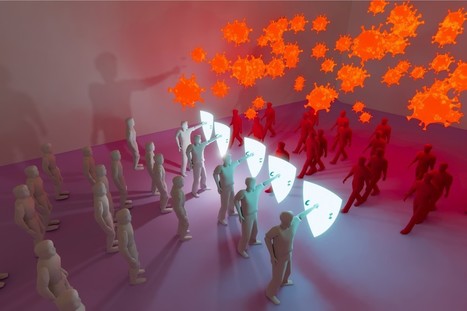

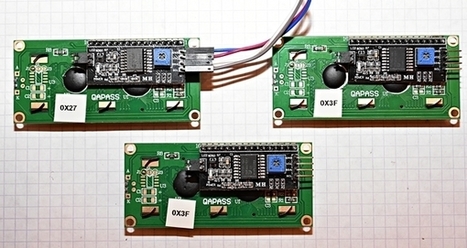
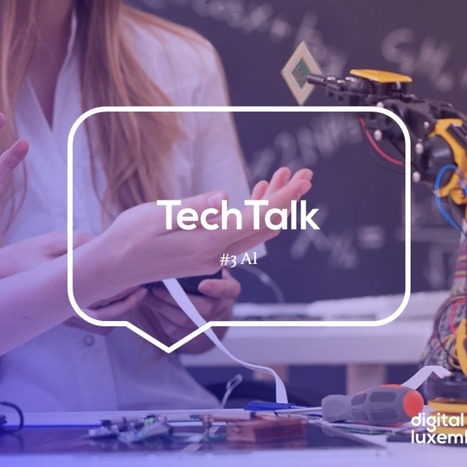
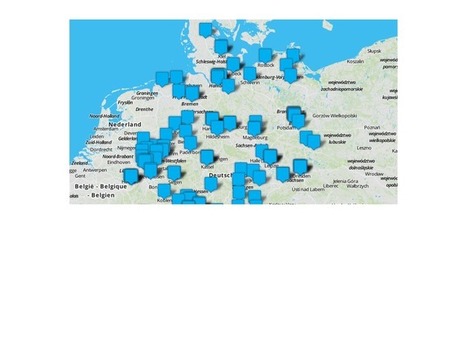


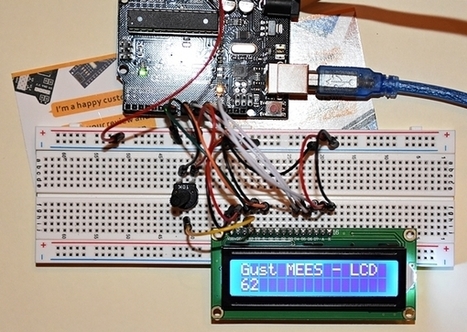
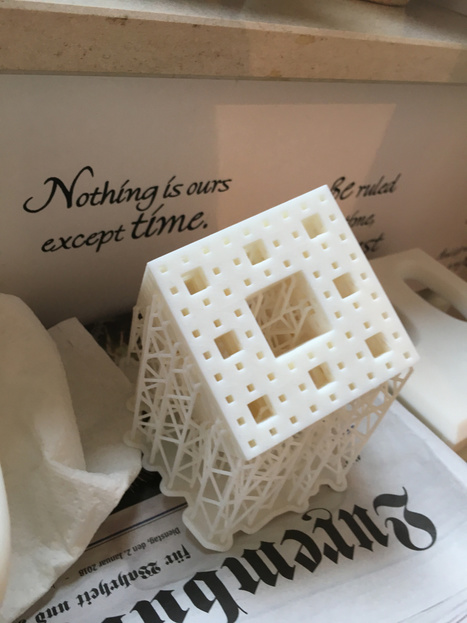



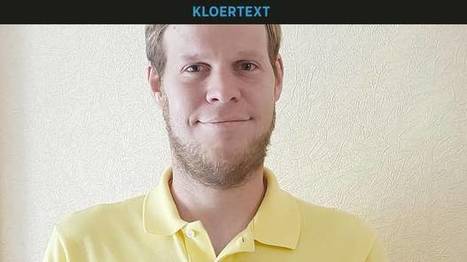




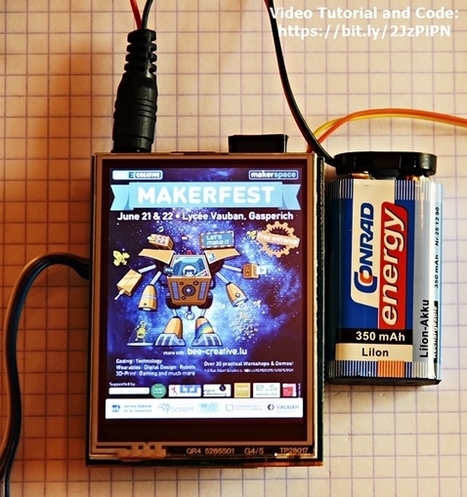


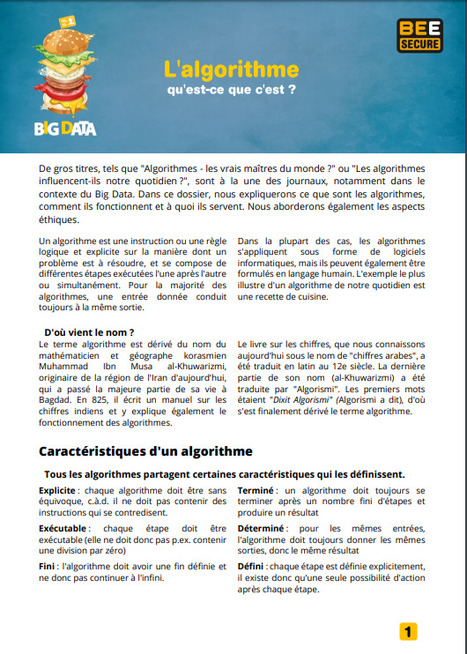
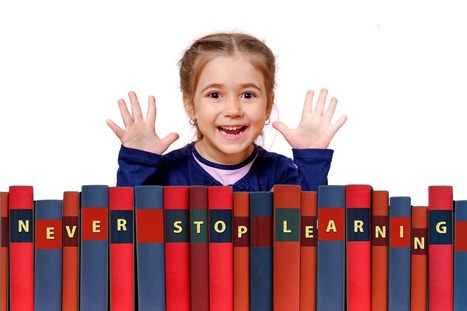


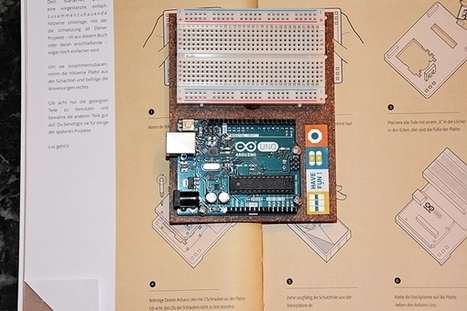






Trois chercheurs de premier plan et un project manager de Bitflyer travaillent depuis la mi-janvier sur une application de tracing, au Luxembourg, à des fins de modélisation pour prévenir les crises futures. Ariana a gommé les problèmes de protection de la vie privée.
Learn more / En savoir plus / Mehr erfahren:
https://www.scoop.it/topic/luxembourg-europe/?&tag=Coronavirus
https://www.scoop.it/topic/luxembourg-europe/?&tag=Apps